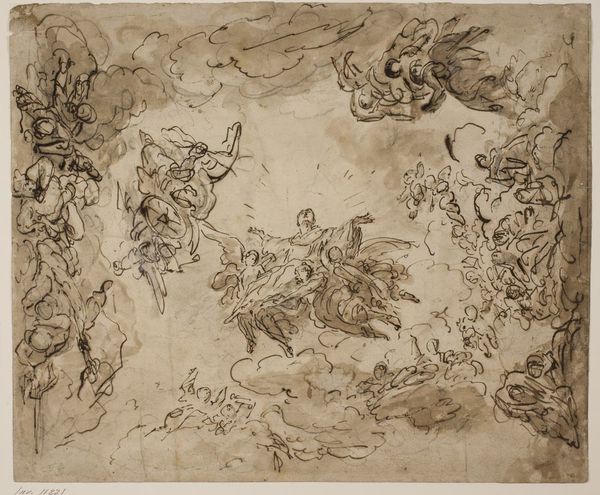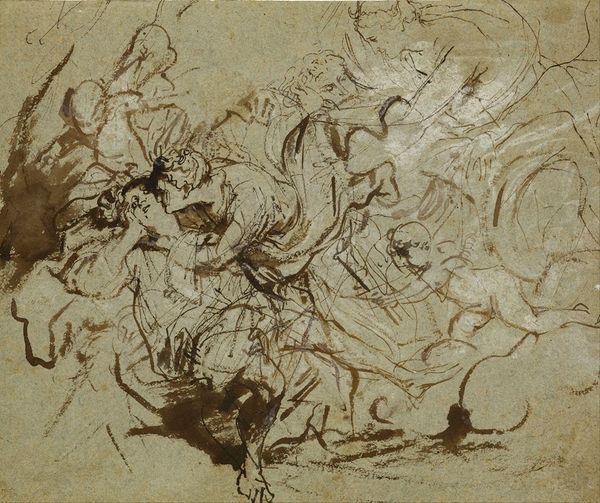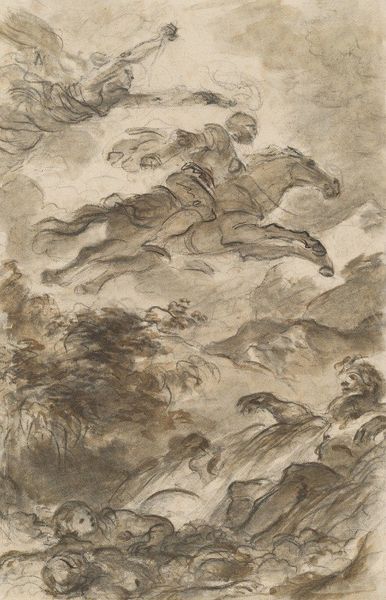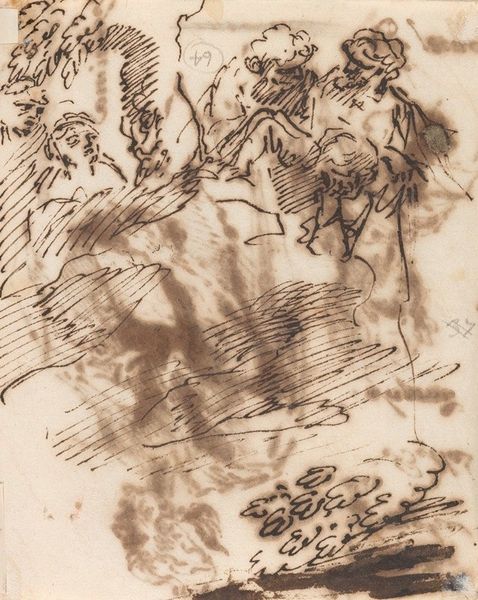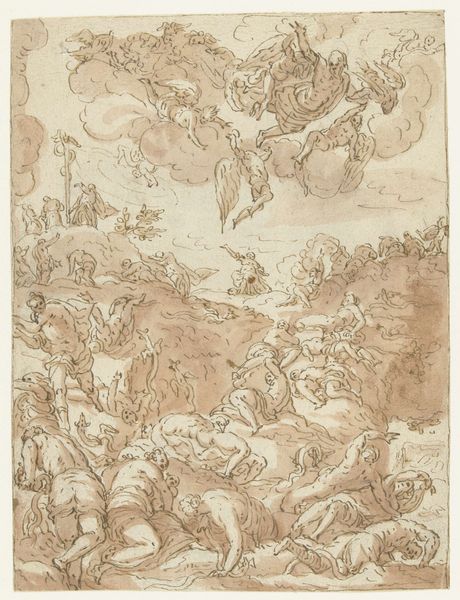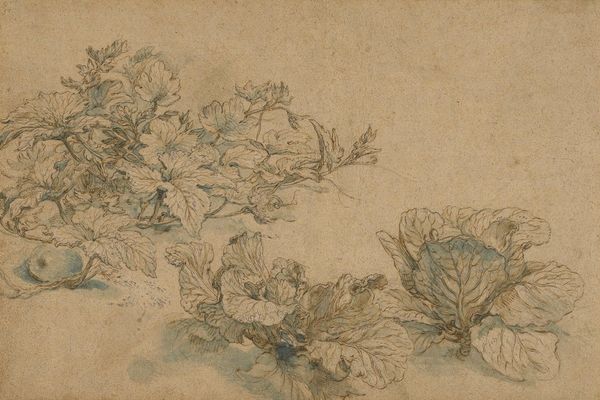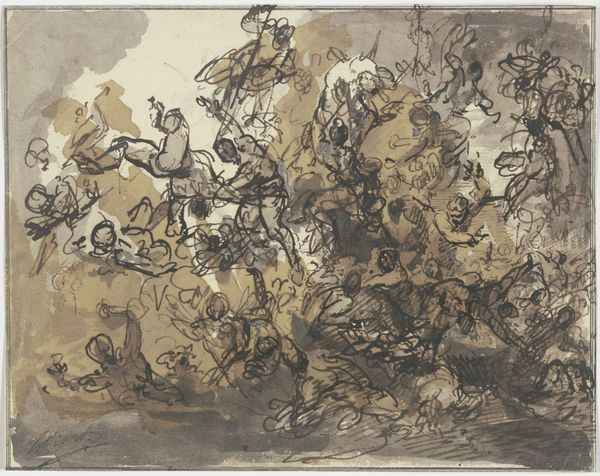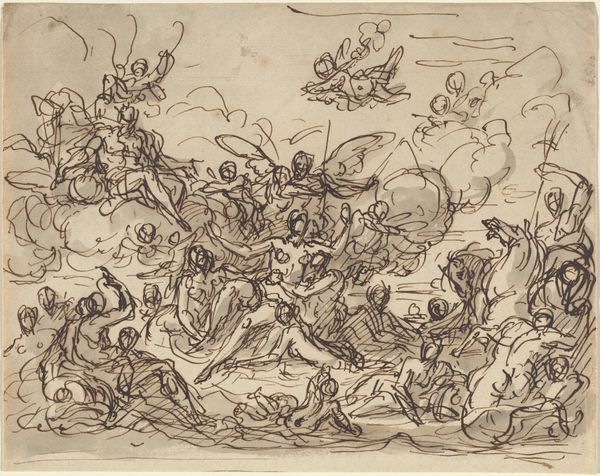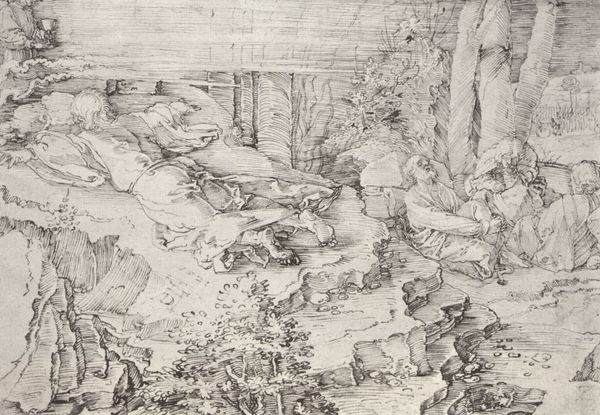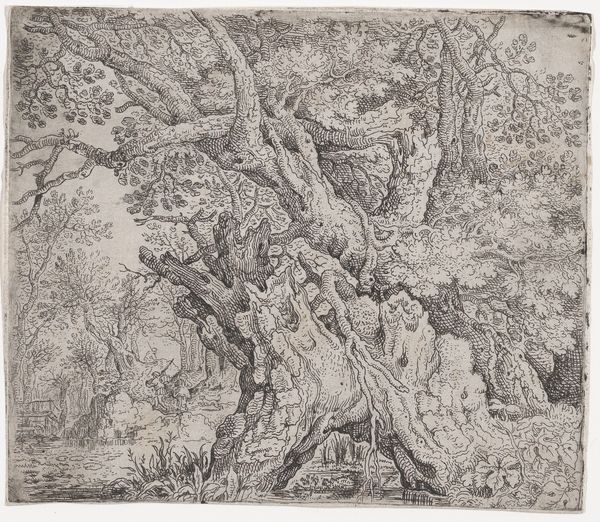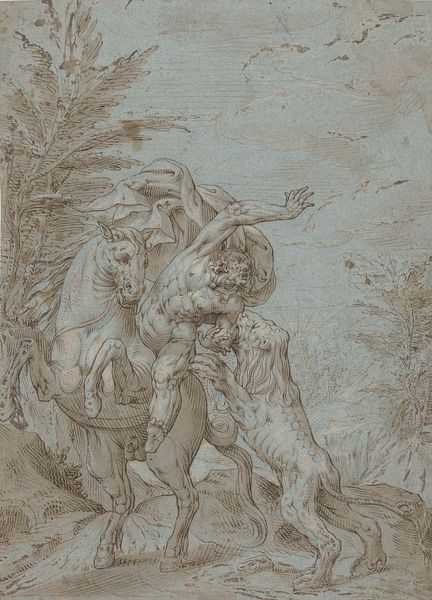
drawing, ink
#
drawing
#
narrative-art
#
baroque
#
ink painting
#
pencil sketch
#
figuration
#
ink
#
line
#
history-painting
Copyright: Public Domain: Artvee
Curator: Looking at "The Fall of the Giants" created circa 1663 by Salvator Rosa, using ink, I'm immediately struck by its dynamic energy. What's your take? Editor: It looks chaotic. The swirling lines of ink seem to drag figures down in a disorienting freefall, like discarded marionettes after a performance. You feel the sheer weight and pull, just from how Rosa uses layering. Curator: Indeed, there's a clear visual metaphor here. The story speaks of the Gigantomachy— the clash between the Olympian gods and the giants, beings born of Gaia, Earth herself, who challenged their reign. So, what we are witnessing here isn't just a tumble, it's divine justice enacted on hubris. Editor: I’m most captivated by how Rosa achieves such texture and depth using just ink. The varying pressure he applies when creating line allows some parts of the image to appear closer than others, and to take on drastically different meanings. You can also appreciate the skill involved in mixing the inks for shade. Curator: The choice of ink as a medium reinforces a link with the classical past, with the very act of drawing serving as a continuation of classical traditions in conveying moral lessons. Drawing was also an act tied to intellectual understanding during this era, allowing for creative play in line with philosophical ideas. Editor: Consider also the relative availability of ink and paper compared to oil paints and canvas at that time. It speaks to a specific level of access, a means of circulating ideas swiftly, bypassing the gatekeepers of more "established" artistic forms. I see an act of democratizing art creation. Curator: Perhaps. It is also likely that it would serve as an under-drawing for a grander composition, or merely an exercise. I cannot deny the expressive use of chiaroscuro that serves to underscore the emotional and psychological state of the figures depicted. Editor: I guess either way you're looking at production versus intention. Is the material dictating use or is intention creating material context? Thanks for letting me consider that further, what about you? Curator: Indeed, seeing this battle of myth, rendered with such passionate, visceral lines, brings into focus how cultural memory becomes inscribed through materials that lend themselves to both detailed observation and unrestrained imagination.
Comments
No comments
Be the first to comment and join the conversation on the ultimate creative platform.
